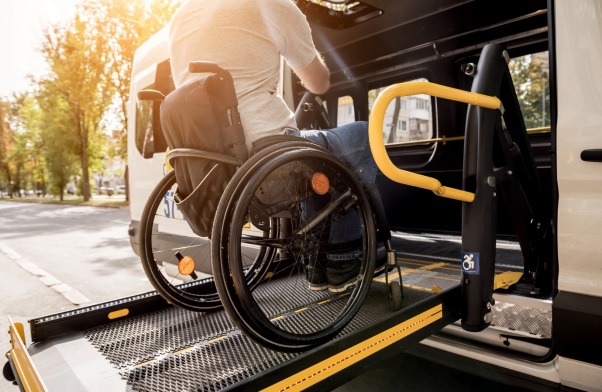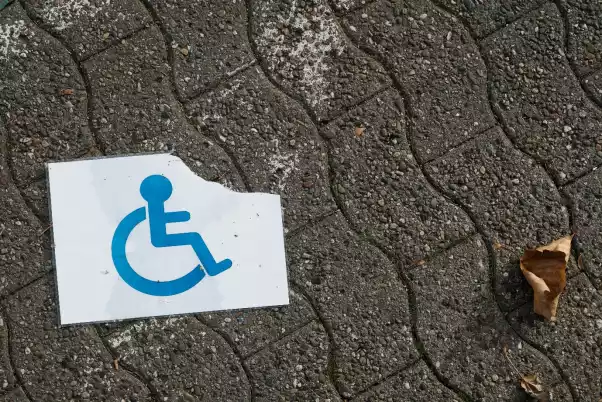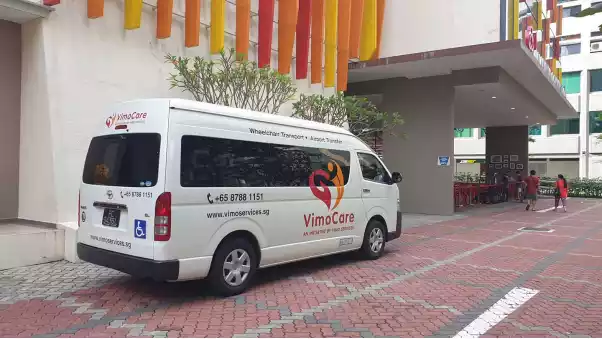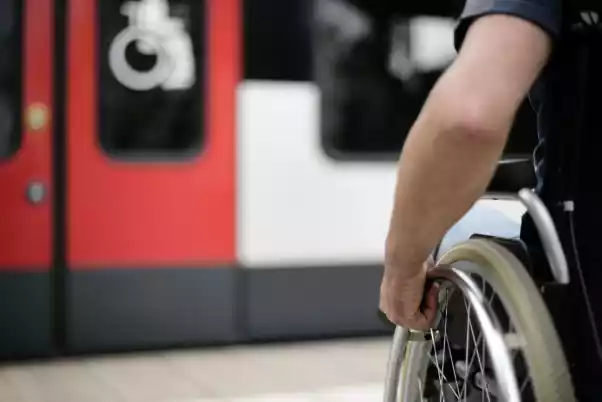Date: Monday, 31 January 2022, 7 PM
Length: 4-minute read

1. Introduction
Accessible transport has always been a subject close to my heart. In the mid-2000s, my late brother and I both raised funds to support the transport needs of our fellow members of the Muscular Dystrophy Association (Singapore), or MDAS1. Back then, there were very few transport services available to non-ambulant wheelchair users (NAWCs) like us, and most of them were operated by social service agencies such as those provided to clients of the Handicaps Welfare Association and SPD, with priority given to those from lesser privileged backgrounds and lower income households. These services often had very high demand and were fully booked on most days and times due to the scarcity of financial and manpower resources made available to local disability support organizations at the time. The labor-intensive nature and high maintenance costs of providing a fully-fledged accessible transport service which includes funding the purchase of a van, hiring a licensed and trained driver, equipping it with a manual ramp or hydraulic lift, and paying for exorbitant fuel prices in Singapore, also deterred many transport providers from catering to our needs and made it very difficult for those who did to stay afloat in their businesses.

2. 2010s
Moving into the early 2010s, the only accessible transport providers for NAWCs that I heard about were Caring Fleet (established in 20102) and Silveray (launched in 20093), due to my participation at several events with MDAS between 2013 and 2015. A late adolescent then, I very much wanted to assert my independence from my family members by going out to meet my friends outside of my house with my paid caregiver as I require 24/7 daily living assistance, like most of my non-disabled peers were doing. I just wanted to feel a greater sense of belonging with my age group. However, the lack of knowledge I had on accessible transport services available in Singapore during those years left that desire of mine largely unfulfilled. I much envied how freely my non-disabled classmates in school were able to commute independently to and from school for lessons and around the island for their social activities using public transport, built mainly with their needs in mind and not those of NAWCs, as well as how conveniently they could access a driver on ride-hailing apps like Grab, which continues to be widely used by Singaporeans in 2022.

3. Rail-hailing apps
Despite the use of on-demand services provided by the ride-hailing giant, Uber (who entered the Southeast Asian market in 20134 and ceased its transport operations in Singapore in 20185), and local transport company, Grab, gaining huge popularity amongst the ambulant population in Singapore in the last decade, and fast becoming the preferred transport mode for non-disabled millennial and Generation Z consumers due to their user-friendly smartphone apps and considerable reduction in time and effort required to hitch a ride from a private-hire car driver as compared to that which was needed to hail a taxi ride in the past, their services remained inaccessible to NAWCs in our nation as neither invested in nor operated a fleet of accessible vehicles equipped with drivers trained to support their mobility needs, until 2021 when Grab launched GrabAssist Plus in February. But currently, as of January 2022, it’s still only limited to ferry passengers from their residential address to selected pick up and drop off points at Tan Tock Seng Hospital and Singapore General Hospital6 and the return trip back to the original pick-up point as its pilot phase has yet to be concluded despite running for close to a year now, meaning that NAWCs who may require the service for non-medical purposes like meeting colleagues for a meal at a café or restaurant near their office during lunch hour, which is a common workplace norm in Singapore, are unable to do so. While GrabAssist has been in existence since 2018, it does not cater to NAWCs but only wheelchair users who are able to transfer themselves out of their personal mobility aids (PMAs) onto one of the passenger seats as their private-hire car drivers can only accommodate those using foldable ones. When I enquired with Grab through a direct message on their official Twitter account in October 2020 about whether they are looking to expand their ride-hailing services to serve NAWCs soon, their staff member stated no and was not forthcoming in her reply, so she seemed to be unaware of their plans to launch GrabAssist Plus several months down the road. Nevertheless, they are still lacking in their support of the transport needs of NAWCs. Much more should and needs to be done in this regard. Thankfully, nowadays there are plenty of accessible transport providers available in Singapore who are willing to accommodate the mobility needs of NAWCs and have drivers who have received specialized training to assist with the handling of their PMAs and the securing of them to ensure passenger safety. Vimo Services is one of them.

4. The last few years
Since 2017, the accessible transport landscape in Singapore has witnessed a dramatic transformation, and there are now a variety of service providers who cater to the transport needs of NAWCs like seniors who use a wheelchair most of the time, or young adults with severe physical disabilities. Currently, the only two which offer the use of an official smartphone app for NAWCs and their caregivers to book rides conveniently are Vimo Services and SilverFleet7. Based on my recent experience using them for the first time, both offer on-demand ride-hailing on top of advanced booking options and do not limit their service to only ferrying passengers to and from medical facilities in Singapore. Users can hitch a ride to any destination of their choice, depending on driver availability. This is a very useful feature made available for NAWCs and our family members because we are not always certain when our appointments may end before we schedule a ride. I’m grateful to them for providing my community with their much-needed services as and when we require them as most wheelchair users do not have the privilege of a family car that can accommodate our PMAs, and taking public transport is often a challenging experience for us due to our physical disability.

5. Conclusion – A universal transport ecosystem in Singapore
My hope for Singapore is in the coming years, our society will embrace a more holistic approach in understanding how to best support the well-being of PWDs. This includes not just having barrier-free access in the built environment or employing disability-inclusive policies and practices in the education and employment scene here, but also expanding our transport services to include those who are unable to use public transport due to family circumstances or illness, like persons who need to take their medicines frequently or are physically unfit to use them. Especially with the ongoing pandemic entering its third year very soon, with no clear sign of the situation getting better in the coming months, it’s imperative that we do our best to preserve the physical health and safety of our vulnerable populations (i.e., NAWCs who live with pre-existing conditions like heart or lung disease and belong to the high risk group or are unvaccinated due to medical reasons, such as seniors living with vaccine-resistant allergies) and one of the most effective ways is by providing safe and affordable transport to them like what Vimo Services does. Accessible transport is key to supporting the physical, emotional, psychological, and social well-being of PWDs because not only does it help us to attend our medical visits regularly and gain access to life-saving medical drugs and treatments, it also grants us a platform to leave our houses occasionally to go for a walk in the park or meet close friends and family for a meal at a café or coffee shop, which are crucial for one’s mental health. In the coming years, I look forward to a universally accessible transport industry for all PWDs, regardless of their ability to ambulate or walk on their own.
References:
- https://impact.youthopia.sg/impact_post/impact-0293-spreading-awareness-for-persons-with-disabilities/
- https://caringfleet.com/about-us-our-company/
- http://www.silveray.com.sg/
- https://www.yelowsoft.com/blog/grab-defeat-uber-becomes-biggest-ride-hailing-company-in-southeast-asia/
- https://www.channelnewsasia.com/business/uber-to-close-asia-pacific-headquarters-singapore-120-jobs-670246/
- https://help.grab.com/passenger/en-sg/900005029423
- https://www.vimoservices.sg/2022-top-5-cheapest-private-wheelchair-transport-providers-wheelchair-taxis-in-singapore/
About
Established in the year 2017. Enjoyed the huge influx of tourists, survived the bruteness of COVID-19 done to tourism and many other industries. Vimo Services has remained strong and committed to serving our local community and less-privileged in Singapore (in our unique way)
Quick Links
Similar Websites
Contact Us
Vimo Services
Co Reg 53374962W
support@vimoservices.sg
7 Temasek Boulevard #12-07
Suntec Tower One
Singapore 038987
